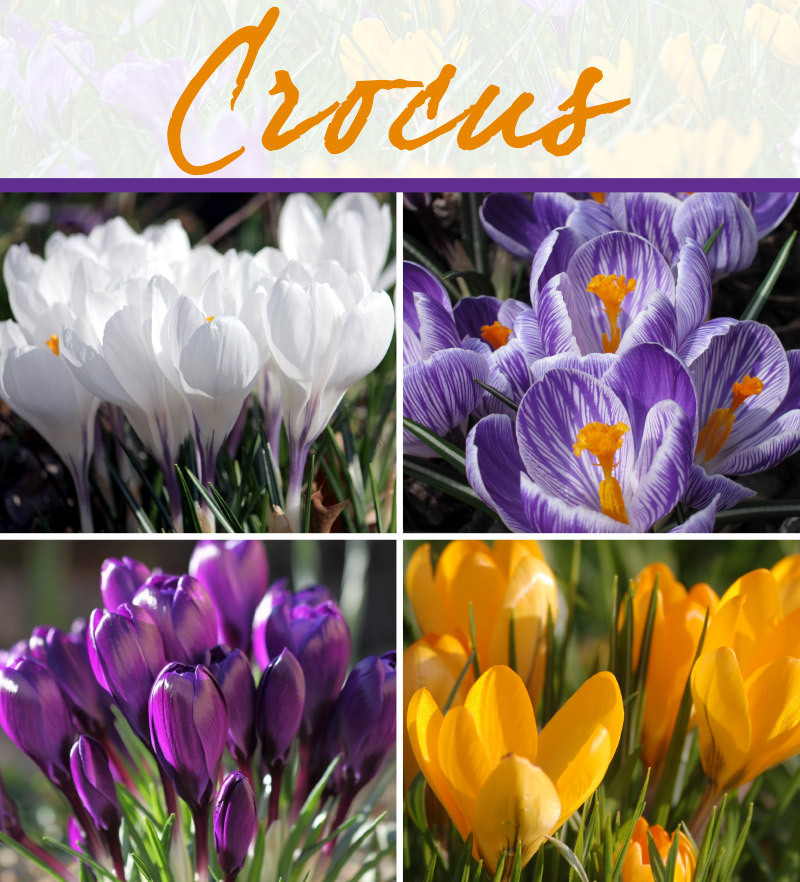I Hail from the Mountains, but Love the Suburbs
Bulb of the Week: Crocus
Gardeners love Crocuses. These die-hard perennials insist on leafing out and blooming every spring, even if there is still snow on the ground.
Originally from the Alps, the Pyrenees, and the Balkans, Crocuses readily make their homes in suburban garden beds, growing well in borders, rock gardens, woodland plantings, and naturalized in lawns. Crocuses include 90 species of plants, most of which grow from three to six inches tall.
Although these easy-care beauties are our “Bulb” of the Week, Crocuses technically grow from corms. Each corm should be planted pointed end up in a garden bed or within a lawn.
Caution: If you decide on a naturalized planting, you will need to wait to mow your lawn until the Crocus foliage dies back for the year. The foliage photosynthesizes, sending necessary food back to the corm to survive from year to year.
A general rule of thumb is to plant a bulb three times as deep as the diameter of the bulb. At time of planting, Crocus corms will appreciate the addition of compost and bone meal/Bulb-tone to your garden bed, a thorough watering (with regular follow-ups if the fall weather is dry), and a dressing of mulch.
Incorporating Repellex, a capsaicin-based systemic animal repellent at time of planting will protect your bulbs from various critters for up to one full year. Repellex is actually absorbed by the roots of the crocus and moves up through the entire plant, giving it full protection.
Dutch Crocuses flower in a fine range of colors. Flower Record blooms a deep purple, while Pickwick is a lovely purple and white striped variety. Peter Pan is a solid white, and Golden Yellow is self-descriptive. Dutch Crocuses (Crocus vernus) tend to produce larger flowers than other cultivated varieties. Our large-flowering mix includes purple, white, yellow, and purple and white striped varieties.
We offer smaller-blooming snow Crocus species (Crocus chrysanthus) that bloom two weeks earlier than the Dutch Crocus. Varieties include Cream Beauty; Blue Pearl, an incredible pale blue; Dorothy, which produces yellow blossoms; and Ard Schenk, which blooms in white.
We also carry Crocus tommasianus “Barr’s Purple,” a squirrel, rabbit, and deer-resistant amethyst colored Crocus that blooms extra early in the spring. Also known as Woodland Crocuses or “tommies,” this variety was named for Muzio G. Spirito Tommasini, a botanist and former mayor of Triestse, who lived from 1794 to 1879.
Just for fun: Did you know that one variety of Crocus (Crocus sativus) produces saffron, the most expensive spice in the world? Each one of these fall-blooming flowers grows just three yellow stigmas that must be harvested by hand to make saffron. This spice is used as a flavoring for food and as an ingredient in perfumes. Saffron also lends its bright yellow color to dishes like paella — and to fabrics.
Visit us today and make your dream of an early colorful spring garden a reality in 2017.

